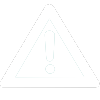Level 2
Level 3
Level 4
Common Questions
Seldom taught outside of Russia, the “imperial” drawing and painting method was uninterrupted by the modern art movements that transformed representational art in the West. The training has been preserved from one generation to the next within an institution which has changed remarkably little over the last 250 years. The method provides a unique and clear lineage to the greater art traditions of the past. More than that, the artwork produced in this approach is impressive in its combination of constructive solidity and observational sensitivity.
This course is intended for any artist who wants to improve their drawing skills as well people new to drawing.
Absolutely! The Russian academic drawing method is a powerful tool for any new artist. The skills you learn in this course will last you a lifetime and set you up well for working from observation or from imagination.
Sight-size is a primarily optical and observational drawing approach where the value patterns as they fall on the eye are transferred in 1:1 scale from life to the paper or canvas. The Russian approach is observational as well but it also utilizes construction which produces a more three-dimensional and solid look.
Yes! This approach is fantastic for painters and it has been tied to the Russian painting method which will be recorded in 2020.
The NMA Coaching program provides professional art mentors to students. The coaches develop personalized curriculum and guide students in their artistic development. Availability is limited. Learn more at: https://www.nma.art/coaching/
Yes, you can find the Complete Russian Drawing Program here.
You can read a description of this course by New Masters Academy founder Joshua Jacobo here: https://www.nma.art/introducing-the-russian-academic-tradition/
You would need to travel to Saint Petersburg and study at the Repin Academy. You can learn more here: https://eng.rah.ru/

 UPDATE! October 1st, 2023: This version of the website will no longer receive updates. Please transition to the new website for the best experience.
UPDATE! October 1st, 2023: This version of the website will no longer receive updates. Please transition to the new website for the best experience. 



CONNECT
New Masters Academy
16182 Gothard St
Huntington Beach, CA 92647
Contact US